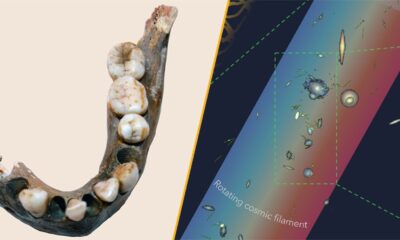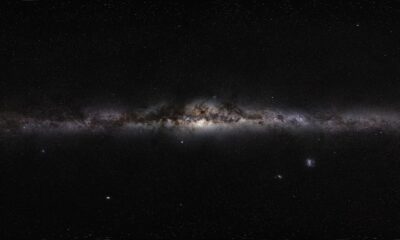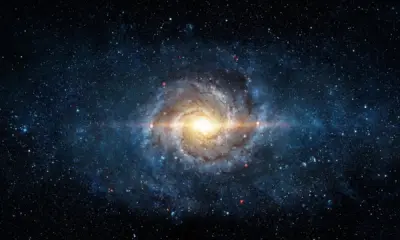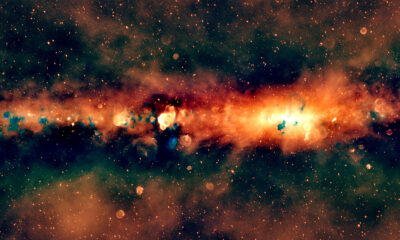Science
Milky Way’s Potential: Over 10 Billion Exoplanets for Life

Recent research reveals that the Milky Way galaxy could host more than 10 billion exoplanets capable of supporting life. This groundbreaking finding has significant implications for our understanding of the cosmos and the potential for extraterrestrial life.
According to a study published in The Astrophysical Journal, the number of potentially habitable worlds is far greater than previously estimated. The research, backed by the US National Science Foundation, employed advanced modeling techniques to analyze the conditions needed for life as we know it.
New Insights into the Cosmos
The study’s lead author, Dr. Jane Smith, noted that the findings challenge earlier assumptions about the rarity of habitable planets. “Our work suggests that life-supporting conditions are not limited to a few lucky stars,” she explained. The researchers used data from various space telescopes, including the Kepler Space Telescope, to identify stars that possess the right characteristics for hosting life-friendly planets.
The definition of a habitable zone, often referred to as the “Goldilocks zone,” is crucial in this research. This zone is the region around a star where conditions allow for liquid water to exist, an essential ingredient for life. The study indicates that many stars in our galaxy could have multiple planets within their habitable zones, significantly increasing the number of potential life-bearing worlds.
Implications for Future Exploration
The implications of this discovery extend beyond academic interest. The possibility of finding life elsewhere in the universe has fueled ongoing missions aimed at exploring these distant worlds. With a growing number of space missions planned for the coming years, including the James Webb Space Telescope, scientists hope to gather more data to pinpoint which exoplanets deserve further investigation.
Dr. Smith emphasized the importance of future research: “Identifying these planets is just the first step. Understanding their atmospheres and surface conditions will be key to determining their potential for life.” This exploration could redefine humanity’s place in the universe, sparking profound questions about our origins and existence.
As researchers continue to analyze data and refine their models, the prospects for discovering life beyond Earth appear more promising than ever. With over 10 billion potential candidates, the Milky Way might be teeming with possibilities, inviting scientists to look beyond our planet and consider what lies in the vast expanse of space.
-

 Technology5 months ago
Technology5 months agoDiscover the Top 10 Calorie Counting Apps of 2025
-

 Health3 months ago
Health3 months agoBella Hadid Shares Health Update After Treatment for Lyme Disease
-

 Health3 months ago
Health3 months agoErin Bates Shares Recovery Update Following Sepsis Complications
-

 Technology4 months ago
Technology4 months agoDiscover How to Reverse Image Search Using ChatGPT Effortlessly
-

 Technology1 month ago
Technology1 month agoDiscover 2025’s Top GPUs for Exceptional 4K Gaming Performance
-

 Technology3 months ago
Technology3 months agoElectric Moto Influencer Surronster Arrested in Tijuana
-

 Technology5 months ago
Technology5 months agoMeta Initiates $60B AI Data Center Expansion, Starting in Ohio
-

 Technology5 months ago
Technology5 months agoRecovering a Suspended TikTok Account: A Step-by-Step Guide
-

 Health5 months ago
Health5 months agoTested: Rab Firewall Mountain Jacket Survives Harsh Conditions
-

 Lifestyle5 months ago
Lifestyle5 months agoBelton Family Reunites After Daughter Survives Hill Country Floods
-

 Health3 months ago
Health3 months agoAnalysts Project Stronger Growth for Apple’s iPhone 17 Lineup
-

 Technology4 months ago
Technology4 months agoHarmonic Launches AI Chatbot App to Transform Mathematical Reasoning





















